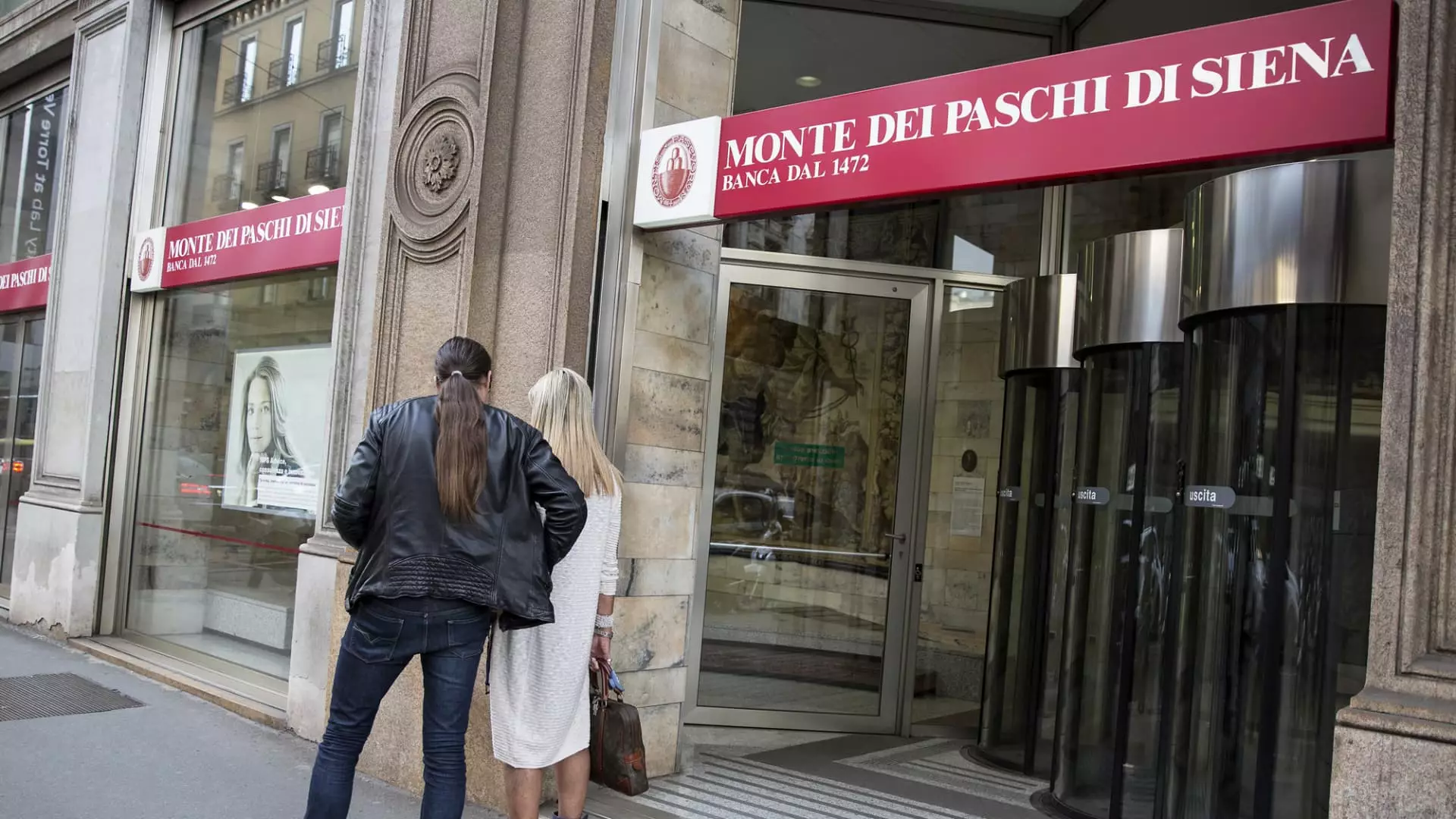In an age marked by uncertainty and volatility in global markets, Monte dei Paschi di Siena, the venerable institution often referred to as the world’s oldest surviving bank, is marching ahead with plans to acquire Mediobanca for a staggering €13 billion. This ambitious move, announced despite a backdrop of market turbulence and skepticism, illustrates the audacity and ideological drive of Monte dei Paschi’s leadership under CEO Luigi Lovaglio. The confidence radiating from the Monte dei Paschi camp is palpable, yet it raises significant questions about ambition overtaking practicality in an increasingly complex financial landscape.
The Prestige and Peril of Mediobanca
Mediobanca holds a key position within Italy’s financial infrastructure, focusing on wealth management and investment banking. This prestige, however, makes Monte dei Paschi’s all-share offer appear even more contentious. Mediobanca’s response to the acquisition proposal—termed “destructive” and lacking financial rationale—illustrates a profound ideological clash within the Italian banking sector. Is this acquisition a strategic masterstroke for Monte dei Paschi or a misguided compulsion to scale up without concrete synergies? Lovaglio’s assertion that consolidation is a path to strength may well be challenged by analysts who warn of the discordant potential between two distinct banking cultures.
The Ghosts of Bailouts and Ownership Changes
The tumultuous history of Monte dei Paschi is not lost on observers. Following its government bailout in 2017, the institution has been like a phoenix striving for rebirth. Now, with the Italian government divesting its majority stake and reducing its ownership to less than 12%, the narrative of recovery and independence seems somewhat hollow when tied to such an expansive acquisition. Lovaglio’s proclamation that “Monte dei Paschi is back” feels at odds with the realities that come with a company that has twice relied on public funds to stay afloat. This begs the question: can a bank truly claim to be in control of its destiny while operating under the shadow of a troubled legacy?
Market Turbulence and the Calculation of Risk
The recent turmoil in the global financial markets raises a red flag over Monte dei Paschi’s aggressive plans. Lovaglio remains steadfast, asserting that the current market environment reinforces the need for expansion and diversification. However, such bravado could be interpreted as willfulness in the face of evident pressures. In a financial ecosystem where companies like 3i Group and Klarna pull back from deals and IPOs respectively, forging ahead with a €13 billion transaction becomes an exercise fraught with risk. Lovaglio’s optimism feels almost anachronistic; can the bank really thrive amidst impending economic uncertainty?
The Analysts’ Dilemma: Incentives or Illusions?
A noticeable fracture has emerged among market analysts regarding the acquisition’s potential. Deutsche Bank has hinted at overlooked opportunities while maintaining a cautious tone, yet Barclays has expressed skepticism, even adjusting Monte dei Paschi’s price target lower. The core of the debate revolves around the perceived need for synergies. Is the belief that size equates to strength a fallacy in today’s financial context? Analysts are increasingly disillusioned with the notion that one institution can absorb another simply in pursuit of a larger market share. The very essence of banking in the 21st century lies not merely in size but in agility, innovation, and resilience—qualities that neither firm has convincingly demonstrated in recent years.
Future Directions: Where Will the Road Lead?
The broader implications of this proposed acquisition ripple through the Italian financial landscape, hinting at a wave of consolidation poised to reshape the market. Lovaglio’s vision for the future encompasses a domestic banking scene where Monte dei Paschi and Mediobanca could emerge as pivotal players. However, declarations of dominance in a field littered with skepticism carry a weight of risk. Can this timid cooperation between disparate banking philosophies lead to a new era of prosperity? Or will it serve as yet another lesson in the perils of unchecked ambition?
In this era of uncertainty, Monte dei Paschi’s bold gambit is striking but fraught with peril. Lovaglio may be attempting to lead a revolution in Italian banking, but at what cost? The fate of this audacious endeavor hangs delicately in the balance, and its outcome will profoundly influence the future of Italy’s financial landscape.

